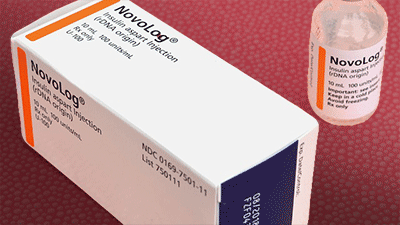Introduction
As a physician, I believe a moral imperative exists to help patients avoid potentially lethal consequences if their supply of insulin—or any other similar life-giving medication—is interrupted. Every Minnesotan has a stake in addressing the growing challenge of unaffordable critical medicines. This is the best time to begin the necessary work to resolve this issue—political bickering and posturing must end, and gridlock must be quashed or more sorrow and death will result.

State Senator Scott M. Jensen
District 47, Minnesota Senate
Specific legislative proposals must focus on a safety-net emergency plan for all persons who are unable to afford their insulin– regardless of insurance status, income, or deductibles. The key ingredients of any solution should include the following: 1) eligibility criteria which support any person in critical need of insulin, 2) sustainable fiscal arrangements, and 3) functioning pharmacy networks in Minnesota.
The bills and amendments proposed in the 2019 legislative session and special session were not ready for implementation. These proposed solutions lacked a network of participating pharmacies, included enactment dates that were more than a year away, muddled financial responsibility between a single link in the insulin supply chain, and used the Health Care Access Fund. Importantly, the Senate did not allow stakeholder testimony in any senate committee hearings. In short, the insulin assistance program was not ‘a high enough priority’ for the leaders in the House, Senate, or Governor’s office because their focus was on completing a biennial budget.
The discussion of who shares the cost burden for life-sustaining medications has been left to dangle in the fickle winds of legislative machinations for too long. The harsh reality is that many patients endure similar challenges but do so with different diagnoses, e.g. unstable epilepsy, fragile emphysema, or peanut allergies requiring 24/7 EpiPen access. They have been overlooked by the legislature.
Virtually every primary care physician in Minnesota and many specialists share numerous stories involving patients who have suffered as a result of the exponential rise in insulin costs. Such narratives include accounts of unimaginable financial stresses, stable health being devastated by prescription medication price increases, and patients perishing because pill bottles were emptied with no way to replenish them. The practice of rationing insulin is not an uncommon response for patients – it has become commonplace and is quite understandable, considering the complex intersection of needs, wants, finances, and priorities.
In early June 2019, a bipartisan and bicameral group of legislators came together to address the legislative shortcoming regarding an insulin assistance program. This invested group worked hard to hammer out details regarding applicant eligibility criteria, a network of participating pharmacies, and sustainable sources of funding. We worked together in a bipartisan manner. Today only the funding issue remains a point of contention. This question cannot be resolved without Governor Walz, Senator Gazelka, and Representative Hortman coming together, rolling up their sleeves, and putting forth a joint proposal.
The puzzling aspect regarding the politicized nature of an insulin assistance program remains: if both parties care deeply about people with pre-existing conditions, why don’t the leaders in the House and Senate commit to getting a program in place? Arguably, there is no more prevalent and galvanizing chronic disease than diabetes. The punishingly inflated prices of insulin still threatens the lives of Minnesotans.
The time is now. Just as we have led before, Minnesota can lead again. A basic package of health care services for all Minnesotans is not too much to ask. Sharing the burden of pre-existing conditions and the cost associated with chronic medical problems is not too much to ask. And finally doing something now rather than later to create an insulin assistance program is not too much to ask. And, in fact, Minnesotans are asking.
To paraphrase Teddy Roosevelt, in times of decision-making, the best thing to do is the right thing, the next best thing to do is the wrong thing, but the worst thing to do is nothing. We have done nothing long enough.
As we sharpen our focus on solving this problem, we must always harken back to a few critical needs in deriving a doable and successful solution: we must utilize the existing network of pharmacies and/or physicians; we must establish a mechanism of sustainable funding (perhaps through licensure or registration fees similar to the Opiate or Pharmacy Benefit Manager bills recently signed by the Governor); we must create an eligibility process which can be responsive to the rapidly changing health status of insulin dependent diabetics who often suffer from multiple illnesses and consume dozens of pills every day. And we must minimize paperwork requirements for program participants.
The time is now. Minnesotans can agree that living with a life-threatening diagnosis is not any one person’s problem – it is a problem for all of us.
Let’s get this done—NOW—not in a year. Much work has been accomplished. The basic template of a bill has been penned—it’s time for hearings, stakeholder engagement, and a challenge to Governor Walz: “Please, call a special session, and help the legislators pass a bill before the father time rolls into a new year.
Image by jwskks5786 from Pixabay
